Author Archive
52 Stories #22-Spending Time With My Dad
 My Dad worked as a petroleum landman and traveled a lot. He often spent weekdays on the road in another state, and one time he had a 3-month temporary assignment half way across the country. Nevertheless, on his weekends or rare weeks at home, he took time for me. What did we do?
My Dad worked as a petroleum landman and traveled a lot. He often spent weekdays on the road in another state, and one time he had a 3-month temporary assignment half way across the country. Nevertheless, on his weekends or rare weeks at home, he took time for me. What did we do?
- He read to us. Dad liked to read, and he served as the parent who read bedtime stories to my brother and me. As we grew older, he took us to the library every weekend. During those visits, he made sure we had plenty of time to browse for just-the-right books.
- He drove us to church on Sundays. My mom did not like to go, and she could not drive, so Dad took us every week. He would serve as an usher during the church service, go home briefly while we attended Sunday School class, and then return to pick us up.
- Dad took care of our lawn, and I helped him with the weeding. We spent many summer evenings working in the yard, chatting away about anything and everything as we pulled undesirable plants from the grass and flower beds.
- I learned cleaning skills from my dad. As a Navy veteran, he took pride in keeping things Ship Shape, and he took responsibility for the basement and the garage. He enlisted my brother and me to help. These chores did not seem so bad when Dad turned them into a group activity.
- When my brother and I were tweens, Dad introduced us to local history. On summer weekends, he took us to various sites around Wyoming where we could experience the history of our state.
- As I grew a little older, Dad and I discovered a mutual interest in family history. We began to compile information, contacting relatives to learn more. He and I worked together on the family tree for many years until he could no longer do so.
- My dad enjoys music. He regularly listened to the radio in the car. He bought a record player when I was small, and he built a small collection of albums for it. Now that he lives in an assisted living complex, I like to visit him during a music activity. He and I sing together or watch a performing group.
Like all kids, I have always thought my dad is the best dad in the world. I realize now that it must not have come easily for him. His own father died in an accident when Dad was seven years old. Never again did Dad have a father in his household. He had no man at home to teach him and guide him. He had no role model for becoming a father himself. Despite that, he did a great job with us.
52 Stories in 52 Weeks #21—Dad and Me
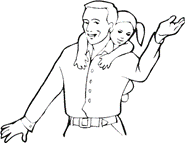 As the firstborn in my family, I am Daddy’s Girl. Over the years I have worked hard to earn his approval, and he generously supports me in whatever I do. He is so approachable that I never hesitate to ask for his help or confide in him. He has an endearing gentleness that I recognized at an early age. Whenever I stubbed a toe or skinned a knee, I wanted him to treat it.
As the firstborn in my family, I am Daddy’s Girl. Over the years I have worked hard to earn his approval, and he generously supports me in whatever I do. He is so approachable that I never hesitate to ask for his help or confide in him. He has an endearing gentleness that I recognized at an early age. Whenever I stubbed a toe or skinned a knee, I wanted him to treat it.
He and I are alike in some of our physical traits and temperament. I inherited my long legs from him. He put his to good use in sports, but I am not that coordinated. My height simply enables me to reach things in high places.
I also inherited The Temper from him and his paternal grandmother before him. Neither of us has much patience, nor did she. One time she cut down all the trees in her yard out of exasperation with the noisy birds living there. Now that is a short temper, and Dad and I both have it, too.
Dad and I have many interests in common, and we get along well. Over the years we have had long conversations about genealogy, history, finance, and politics. Dad worked as a petroleum landman for a major oil company, and I followed him into that profession. We both liked contracts and land title work.
Dad fostered my life-long interest in reading. He was the parent who read to us when we were young. When I had behavior problems in the second grade, he cured me by introducing me to the public library. He explained that if I just kept a novel in my desk, I could take it out to read instead of disturbing my classmates. It worked.
Dad and I differ in one big way. He has always loved team sports. At school he participated in every season—football in the fall, basketball in the winter, and track in the spring. He set a school record for running the mile, and he played college football. As an adult, he joined bowling and volleyball leagues. I have no such talent, nor do I have much interest in sports. I have rarely joined him to watch a ball game on TV. I prefer outdoor recreation like camping, hiking or bicycling, but Dad did not join me in those activities.
Through the years, my Dad has set a good example for me in all that he did. He nurtured my early interests, took me to church, and taught me valuable life skills. I often wonder how he became such a good dad when he lost his own at the young age of seven. Perhaps he just had a talent for it, and I am the lucky recipient.
52 Stories #20–Strong Women
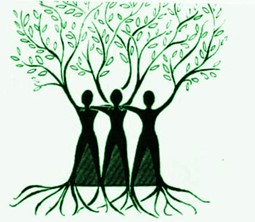 Challenges and hardship can shape people. Have I seen examples of this in my own family? Of course. These women, my ancestors, lived through and overcame obstacles that I cannot imagine facing, yet they survived.
Challenges and hardship can shape people. Have I seen examples of this in my own family? Of course. These women, my ancestors, lived through and overcame obstacles that I cannot imagine facing, yet they survived.
- Olive Dunbar Riddle (1823-1902), my great-great grandmother. She was born on Cape Cod and spent her early years there surrounded by a large extended family. Her Hall and Dunvar forebears had lived in that state for 200 years, so it surely felt like home. Her father worked as a saltmaker. Olive likely envisioned that she would make her life in the area where she grew up, but life had other plans for her. The salt trade dried up before she was 10, and the parents decided to relocate to the country’s interior. They sold everything and moved to Ohio, taking young Olive with them. Shortly thereafter, Olive’s father, Benjamin E. Dunbar, died. Olive lived with her widowed mother until she married John D. Riddle when she was nineteen years old. After their marriage, Olive sold land she had inherited and the couple moved to Mendon, Michigan. There they bought a farm and had a family of nine children. Olive likely worked had as a farm wife, but things did not turn out happily for her. Her husband lost an eye, and they lost a grandchild in a fire. Several of her children moved far away to homesteads in Nebraska. As the years went by, the sight in John’s remaining eye failed, and they relied heavily on the help of their eldest son, Isaac Newton Riddle. By 1896, John greatly feared blindness and poverty. He took his own life, leaving 73-year-old Olive a widow with a farm to run. Olive spent her remaining years on the farm with her son, scratching out a living. She passed away six years later after a hard life of trekking twice through the country to build a new home, raising a large family, and surviving tragedy. Her family remembered her as a kind and sweet woman, so she must have borne it all with grace.
- Anna Petronellia Sherman (1865-1961), my great-grandmother. Petronellia never knew her mother. The family story tells us that this German woman died shortly after the birth of her child. Petronellia spent her early years as a virtual orphan in her paternal grandmother’s Illinois home. Her father Thomas was often away on blacksmithing jobs. When Petronellia was six, a step-mother named Mary came into her life for a few years. Perhaps Petronellia was fond of her step-mother; she adopted Mary’s Methodist faith. Yet by the time Petronellia reached the age of fifteen, Mary was gone, and her father was marrying again. This time, Petronellia definitely did not like her new step-mother, Alice. Petronellia left the stormy household as soon as she was able and promptly married a much older man. Samuel Harvey Reed already had two surviving daughters, 13-year-old Anna and 11-year-old Clara. Eighteen-year-old Petronellia became a step-mother herself. She and Samuel moved to southern Missouri to begin a new life away from Samuel’s disapproving family, and she had seven children of her own. By all accounts, it was not easy to get along with Petronellia. She and Samuel divorced in 1904, and Petronellia later said she had married him because she liked his big, white house in Ashmore, Illinois. She had not known it actually belonged to his father, Caleb. After her divorce she married a former Confederate officer, John Coffey. That did not last long. After their divorce, Petronellia resumed used of the Reed surname and kept it the rest of her life. By World War I, one of her sons, Robert Morton Reed, worked on the railroad in southeastern Wyoming, so she took up a homestead there as a way to make a living on her own. She was in her fifties, and the first year she managed to grow only a bucket of potatoes. She disliked the dry, windblown prairie, so she sold out when she proved up the homestead. Her crustiness had seen her through. She returned to the gentle landscape of southern Missouri. Finding strength in her Methodist religion, she remained there and lived to be ninety-five years old. She is buried in the churchyard of her beloved Methodist church in Huggins, Missouri.
- Laura Riddle (1853-1933), my great-grandmother. Laura could write her name but not much else. She was not much of a student. Born on a Michigan farm to Olive and John Riddle, she became a farmer herself. By 1880, she was a single mother of three sons, two of them disabled. Without much opportunity in Michigan, she moved to Nebraska near McCook to homestead alongside her older sister, Theodocia. A few years later, Laura’s eldest son left home, and Theodocia’s family moved on to Hyannis, Nebraska. Laura herself elected to settle on a new homestead near Palisade with her two younger sons, Louis and Joe. Eventually, she had another child, a daughter this time (my grandmother, Grace). Life on the homestead was hard, and Laura finally had to send Grace to live with Theodocia. When the chance for a larger homestead arose a few years later, Laura and the boys took it and moved on to Haigler, Nebraska. Throughout forty-five years of homesteading, Laura managed to care for her two sons and keep a farm. When she was in her 70’s, she finally gave up her homestead and retired to Palisade with the boys. Described as a strong and robust woman, she lived to be eighty years old. The money from the homestead sale provided her a living for the rest of her life with a little left over for her four children. Despite a life of terrible hardship, Laura had never given up.
- Sofie Sivertsdatter (1878-1966), my great-grandmother. Sofie was born at Valfjord in the county of Nordland, Norway. It must have been a sad household. At least five older siblings had died. Living in a home with elderly parents taught Sofie to be a hard worker. From an early age she contributed by caring for livestock for a relative. Eventually, she made her way to the town of Stokmarknes to work. There she met and married Ole Jorgen Bentsen. Life with him was not any easier. Almost immediately, he left for America, leaving her behind until their first child was born. The next year, traveling alone with a newborn, she made her way across the ocean to meet Ole in Minnesota. They scrimped and saved for two years until they had enough to settle on free land in Montana. Twice they homesteaded there, first on a 160-acre tract and then later on a 320-acre tract. After two more children had joined the young family, Sofie spent one winter virtually alone on the homestead while her husband lay in town ill with typhoid fever. Sofie nearly ran out of supplies and would have starved to death had not a passerby butchered a calf for her. Happily, Ole recovered and returned to her. Eventually, Sofie had another two children while she and Ole continued to manage their homestead and acquire more land. They were proud that they never borrowed against it, not even during the Great Depression. In 1952, they decided to retire to the town of Plentywood, Montana, and they sold their land to their son, Otto. Sofie developed a degenerative illness, but she carried on keeping house for Ole and attending events at the local Lutheran church. Despite her illness, she made fattigmand every year at Christmas time. By 1966, she became too weak to continue, and she passed away at the age of eighty-seven. She is buried in a prairie cemetery at Redstone, Montana, not far from her farm.
Strong women, all of them. I cannot imagine surviving some of the difficulties these ancestors faced. They survived pioneering, brutal farm labor, family tragedy, disabled children, and debilitating illness. If not for them, I would not be here. From their legacy I learned that complaining does no good. Find a way to keep going.
Mourning Samson
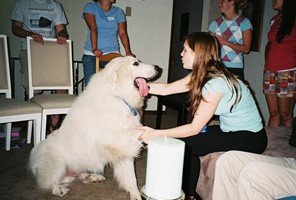 Yesterday we lost a beloved canine member of our family, my son’s dog Samson. He had been part of our clan for ten years.
Yesterday we lost a beloved canine member of our family, my son’s dog Samson. He had been part of our clan for ten years.
Can it have been that long since I received the telephone call about Samson from the animal shelter in San Antonio, Texas? I learned that my son, a newly-minted second lieutenant in the Army, wanted to adopt a rescue dog, a malnourished Great Pyrenees named Samson. Problem was that the Lieutenant had no permanent home address yet because he was on a short assignment at the time. The shelter wanted someone to agree to take Samson in the event the Lieutenant could not care for him. Would I do that? What?
“May I speak to the Lieutenant, please?” I asked.
Of course, he talked me into committing to giving Samson a home if he could not. He told me young Samson had suffered abuse and was severely underweight. With a thick, white fur coat, he suffered mightily in the Texas heat. My son promised to nurse him back to health and take him to his permanent base at Fort Drum later in the year. Fort Drum, where the Army does winter training. A much better location for a dog like Samson.
The Lieutenant was as good as his word, and I never had to take Samson in to my home. With proper care, he regained his health.
The big dog thrived in cold upstate New York, and he romped happily in the huge backyard my son provided for him. Over the next years, Samson oversaw the growth of a family—first a wife, and then three children. He adapted to new surroundings when the family moved to Colorado. All the while, he offered wonderful companionship to his family and served as a faithful watchdog.
Then his hips began to fail. Samson could no longer make mud wallows in the yard or frisk about in the snow. The day came when he could not walk outside to relieve himself on his own. We knew the time was coming to say good-bye to our fluffy friend.
Now he has joined all the other gone-but-not-forgotten doggy members of our family—Timmy, Daisy, Eric, Sam, Thor, Skye, Sunny, Mac, and Bailey. We miss them all.
52 Stories in 52 Weeks no. 19—Remembering Grandma
I remember both of my grandmothers so well—the Homesteader and the Flapper. They could not have been less alike, but I thought they both were great. Neither lived in the same town as me, so I looked forward to their visits. They usually stayed at our house at the same time for a couple of weeks in the summer and a couple of weeks at Christmas time.
The Homesteader
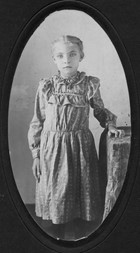 My Dad’s mom, Grace Riddle (1896-1976), was born on her mother’s Nebraska homestead. When she was about four, her mother could no longer care for her, and Grandma Grace went to live with an aunt. This woman had already raised her own family, and Grandma probably provided a good deal of help around the ranch her aunt and cousins ran. When the aunt died, she left Grandma a portion of her estate equal to that of her own children.
My Dad’s mom, Grace Riddle (1896-1976), was born on her mother’s Nebraska homestead. When she was about four, her mother could no longer care for her, and Grandma Grace went to live with an aunt. This woman had already raised her own family, and Grandma probably provided a good deal of help around the ranch her aunt and cousins ran. When the aunt died, she left Grandma a portion of her estate equal to that of her own children.
Grandma Grace seemed quite elderly to me even when I was a small child. Having grown up on a homestead at the turn of the last century, she was very old-fashioned. She wore housedresses and hose supported with ring garters. She never wore makeup. She had no television or telephone at home and did not understand how they worked. Nor could she comprehend why anyone would need them. She had no checking account and paid for everything with cash. Grandma liked to read, and she read every word of the newspaper every day.
Whenever Grandma Grace came to visit, we always eagerly asked whether she needed help unpacking her suitcase. We knew it was filled with trinkets for us. She delighted in collecting small items to give us each time she visited.
She liked to play with me. We made mudpies together, and we shared tea parties. When I was small, we took naps together on hot afternoons. She fell asleep easily while I continually asked whether she was still awake.
Her favorite household chore was washing dishes. That was my job at home, so she liked to help me. We had great conversations as we cleaned up the kitchen. She was interested in everything I did—school, choir, piano lessons.
Grandma Grace had six children, and she knew how to talk to kids. She shared little about herself, instead asking questions to draw us out in confiding in her. I was fortunate to have her for a Grandma.
The Flapper
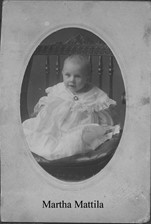 You would never have known that my Mom’s mom, Martha Mattila (1906-1977) was the child of immigrants from Finland. Although she had spoken only Finnish until she started school, she spoke perfect English by the time I knew her. She had gone to college and taught elementary school.
You would never have known that my Mom’s mom, Martha Mattila (1906-1977) was the child of immigrants from Finland. Although she had spoken only Finnish until she started school, she spoke perfect English by the time I knew her. She had gone to college and taught elementary school.
Grandma Martha was a city girl from Minnesota. She had come of age in the roaring 1920’s. Grandma Martha loved shopping, dressing up, getting her hair done, and makeup. As a girl, I was fascinated with her morning routine of choosing a stylish outfit and “fixing her face”.
Grandma Martha enjoyed gossip. As soon as she arrived at our house, she would settle in, light a cigarette, and proceed to tell us the news of our extended family. She knew the dirt on everyone and did not hesitate to share it. Memories of these conversations really helped me reconstruct my family tree when I became interested in genealogy.
Grandma Martha encouraged me in things a girl should know. She exhorted me to continue with my piano lessons when I became discouraged. She helped me with embroidery projects. She taught me to play card games. She bought me thoughtful gifts that I remember after all these years—a leather-bound Bible, a bonnet-style hairdryer.
She liked jewelry and wore a lot of costume pieces. When she tired of something, she gave it to me. I still have some of her necklaces and bracelets. I wore one to my youngest son’s wedding in memory of her.
Their Legacy
I remember both of my grandmothers as being very supportive of me. I knew them equally well even though they lived in other states. I loved when they came to visit, and I always begged them to stay longer.
Both expressed the wish to live long enough to attend my wedding. They both made it! One of my favorite wedding photographs is of my groom and me standing with my grandmothers.
Each of them contributed in her own way to the person I am today. From Grandma Grace, I have a love of reading and a frugal nature. From Grandma Martha I learned life skills. From both these women, I hope I learned to be a good grandmother.
A CCC Record Sheds Some Light on the Family
 As a youngster, I heard that my Dad’s older brother, Owen Howell Reed, had served in the CCC (Civilian Conservation Corps) during the Great Depression. No one ever offered any details, and I did not think to ask. I was vaguely aware that the CCC was a
As a youngster, I heard that my Dad’s older brother, Owen Howell Reed, had served in the CCC (Civilian Conservation Corps) during the Great Depression. No one ever offered any details, and I did not think to ask. I was vaguely aware that the CCC was a
public work relief program that operated from 1933 to 1942 in the United States for unemployed, unmarried men from relief families as part of the New Deal. I knew nothing about where or how long my uncle served.
Some time ago, one of the genealogy newsletters that I read regularly contained an article about how to obtain CCC records from the National Archives. I recalled my uncle’s service and decided to learn more.
I submitted a search request on Form NA 14136 (02-14) to the National Archives at Saint Louis asking whether they had a personnel record for my uncle. I provided his birthdate, birthplace, parents’ names, and hometown at time of CCC employment. They soon replied to tell me they had the record I sought.
I sent in an Order for Archival Reproduction Services with my $70 payment (pretty steep!). Of course they processed my credit card payment right away, but the record never arrived. That was in March of this year.
After nearly three months had passed, I finally sent an e-mail message asking about it to the Archivist who had handled my request. She sent the record again, and this time I received it.
As I read the 12-page file, I enjoyed learning a bit more about my uncle’s life. The file also contained some new family information for me:
- It provided a physical description of my 17-year-old uncle in 1940—5’10” and only 125 pounds.
- It included the education levels achieved by his parents, my grandfather and grandmother. They had completed the 7th and 8th grades, respectively.
- It told me that my uncle had done Very Satisfactory work as an Assistant Education Advisor in Wellington, Colorado for 5 months after his high school graduation in 1940. He left on his 18th birthday to join the United States Army.
- I learned that my widowed grandmother had received a $22 per month allotment during the time of his service.
I know that times were hard for my Dad’s family during the Depression years. His father, the breadwinner, had died in 1935, and all the young boys had to work after that. A place in the CCC must have been a real blessing for the family. My Dad surely benefited from that monthly payment earned by his older brother. I am glad I ordered the record to find out more about this chapter of the Reed history.
52 Stories #18—Stories of the Old Days
 My mom used to tell us stories about her childhood on the Iron Range of Minnesota. Her mother, Martha, had grown up there, too. In the first half of the twentieth century, both had a multicultural upbringing even as they lived in a close-knit Finnish family.
My mom used to tell us stories about her childhood on the Iron Range of Minnesota. Her mother, Martha, had grown up there, too. In the first half of the twentieth century, both had a multicultural upbringing even as they lived in a close-knit Finnish family.
Some tales I remember:
- Grandma Martha’s immigrant family and relatives were all Lutheran, but many of the neighbors were Roman Catholic—Italians, Poles, Bohemians. When my grandmother was a small child, she heard the Catholic Bishop was coming to the community for a visit. Grandma did not know what a Bishop was, but all the neighbors seemed to be in a frenzy about this. When the big day finally arrived, Grandma decided to protect herself by hiding under the bed. “And I wasn’t even Catholic!” she exclaimed.
- When Grandma grew up, she and her family lived in a house built by her carpenter father. It was next door to her parents’ house, and the two residences shared a clothesline. Trouble ensued because Grandma and her mother had different laundry day practices. Grandma always left the clothespins on the line to be used next time she hung out her wet laundry. My great-grandma, Ada, always collected the pins when she took in her laundry, leaving none on the lines for Grandma to use. The controversy over this had come to a boiling point when my grandfather finally settled the matter. He painted all his wife’s clothespins red so Ada would know they belonged to my grandmother.
- During the Depression years, many families raised a little livestock to provide food. My mother spoke of the neighbors directly behind them who would wring and pluck chickens while Mom’s family ate dinner and watched from their kitchen window. Another family kept a goat to provide milk for their daughter. My uncle was known to sneak over to their property and milk the goat. The same uncle also used to help his grandfather make (and drink!) dandelion wine.
- One day the circus came to town. Unfortunately, an elephant died during its stay. What do you do with an elephant carcass? Hibbing officials buried it beneath the main street of the town. My mom always wondered if any record had been kept. Perhaps some future builder will discover the bones and wonder how they came to be there.
- School days were not always dull. One time, the boys in Mom’s class put stinky limburger cheese in the classroom radiator. When the heat came on, the room became quite smelly, provoking the teacher.
- The Finns in the community regularly visited the public sauna. Often my mom had to accompany her grandmother. She dreaded these visits because she disliked sitting in the nude with the elderly women in the sauna. They all spoke in Finnish, which Mom could not understand.
- Mom enjoyed other outings with her grandmother. The grandparents owned some land at the edge of town and used it for foraging. Mom often went with her grandmother to collect berries and mushrooms. Her grandmother told her the land would be valuable someday because it was located near the Hibbing airport.
- Mom enjoyed spending time with her grandfather, too. He used to carve little wooden toys for her. He took her downtown on Saturdays. He often let her buy some candy although it took her forever to make up her mind on what she wanted.
These stories and more made the life of the immigrant community more real to me. Both Mom and Grandma had a hard time leaving Minnesota after WWII when my grandfather decided to change careers and move to the West. For the rest of her life, Grandma always avidly read the Hibbing newspapers sent by her younger sister. She never forgot her younger years in Minnesota, and neither did my mom.
A Key Sparks a Conversation
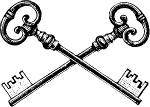 A few days ago, my young granddaughters made a discovery when they visited my house. They found my blacksmith’s iron key. They wanted to know what it was and why I had it.
A few days ago, my young granddaughters made a discovery when they visited my house. They found my blacksmith’s iron key. They wanted to know what it was and why I had it.
Their curiosity presented me with a teachable moment and an opportunity to tell them a little about their family history. I explained that they come from a long line of blacksmiths in the Sherman branch of their family tree. My key reminds me of that although it does not unlock anything that I own. It serves as a paperweight.
I have not had it very long. Knowing my family history, my husband/tech advisor gave me the key and several richly-illustrated children’s books about blacksmiths for Christmas last year. Now I was happy to share some information about blacksmithing with the girls.
I explained that the key they found is a replica of antique keys once made by blacksmiths. They were amazed that common household items like farm tools, pots, locks, and keys used to be made, one at a time, by village blacksmiths, including their ancestors. As we discussed the role of a blacksmith in the community, they were relieved that today they have the luxury of visiting a dentist instead of needing the blacksmith to pull a bad tooth with the same tool he used to remove nails from a horse’s hoof.
The girls liked the photos of blacksmiths hammering hot metal at the anvil while wearing heat-resistant leather aprons. They learned new words like forge and smithy and bellows. One of girls recalled visiting a working blacksmith shop at the Littleton [CO] Historical Museum. Now the other granddaughter wants to see it, too.
Not bad for a spur-of-the-moment history lesson.
52 Stories #17–Mom and Me, Oil and Water
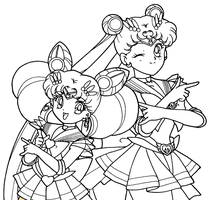 How were my mom and I alike? How were we different? Even today, so many years after she passed away, I find those questions difficult to answer. I do know that we did not get along well. Were we too much alike? Too different? Perhaps the long lens of time will allow me to look back to answer these questions better than I could have while she was still living.
How were my mom and I alike? How were we different? Even today, so many years after she passed away, I find those questions difficult to answer. I do know that we did not get along well. Were we too much alike? Too different? Perhaps the long lens of time will allow me to look back to answer these questions better than I could have while she was still living.
Personality-wise, we had some things in common. She and I both occupied the same family position—eldest child. A lot goes along with being the big sister. The eldest daughter does a larger share of the housework and childcare than younger siblings do, so we had that in common. We both turned out to be responsible, reliable, diligent people.
Both of us also could be called sequential (as opposed to global) learners who approach problem solving as a step-by-step process. We both were good students, and she was even valedictorian of her high school class in Hibbing, Minnesota. I went to one of the country’s best law schools. We both belonged to the Honor Society of Phi Kappa Phi.
After that, many of our similarities ended. In adulthood, I have tried to be a life-long learner by reading a lot and taking classes. I join organizations that provide some mental stimulation—genealogical, political, and cultural clubs. In contrast, my mom always said she had read enough in school and did not want to do it anymore. She preferred solitary, repetitive pastimes like sewing and gardening. She loved celebrity gossip.
She tried to share her interests with me, but it did not take. I detest using a sewing machine, and in the garden I have a brown thumb. I do not follow celebrity news, and in fact I do not know the names of many of them. I would prefer discussing the issues of the day to discussing the lives of movie and television stars.
Why didn’t we get along? I am probably too close to the relationship to provide an objective answer. We did not enjoy doing the same things, and we found little to talk about when we visited one another. Each of us was critical of the other. We did not have a close mother-daughter bond, and in that we were alike. She did not get along well with her own mother, either.
We had personality traits in common, but we did not have the same interests. As mother and daughter, we were like oil and water.
52 Stories #16–Home
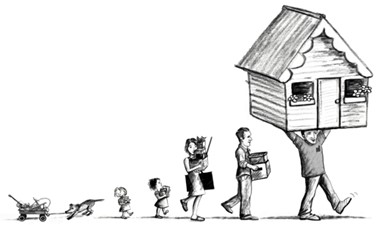 They say “home is where the heart is”, but in some ways home simply means the place I live now. My heart has remained in my Wyoming birthplace during my lifetime, although I have lived in Colorado for over thirty years. Perhaps I have two homes.
They say “home is where the heart is”, but in some ways home simply means the place I live now. My heart has remained in my Wyoming birthplace during my lifetime, although I have lived in Colorado for over thirty years. Perhaps I have two homes.
I came to Colorado willingly in the 1980’s with a job transfer. My dad had grown up here, and a couple of his brothers still lived in the Loveland area. I also had extended family all up and down the Front Range at that time. I had visited Colorado as I grew up, and I liked it. The weather was good, and there was more economic and cultural opportunity than in Wyoming.
When we arrived, my husband/tech advisor and I settled into a nice, two-story house in what is now Centennial and began raising our family. We put down some real roots and enjoyed our life. We loved our house and the beautiful yard we created. We got involved in church, politics, Scouting, and the genealogical community. We began to feel more at home.
After our children grew up, they and their families moved into houses nearby. Our family grew. We resumed frequent child care with another generation, and it became more difficult to find time to maintain the big yard. We did not like having so many stairs. We began to think about moving to someplace with less upkeep once we retired. We liked the idea of a patio home but thought a move remained a few years in the future.
Then the City began an undesirable construction project too close to our property. Trying to reason with them went nowhere. We felt the need to leave, but were we ready for retirement-style living?
If the answer was “no”, we probably would need to move twice—once to an interim place, and later to the long-intended patio home. We realized that because moving is both strenuous and expensive, once would be enough.
That winter five years ago, we sold our house and moved into a wonderful patio home just two miles south of where we used to live. We felt fortunate to be able to stay in the same vicinity that we had come to identify as home—keeping the same familiar shopping areas, medical facilities, and church.
We met wonderful new neighbors and became involved in a new community. We have nested by doing several home projects.
Our house truly feels like home now, and perhaps Wyoming feels less so. My dad has moved back to Colorado, and my mother-in-law is selling her place to move into assisted living. In the years ahead, we will have less of a reason to visit Wyoming. Close family members who helped make that state feel like home will no longer be there. Our children and our future lie in our adopted state, and we are content here. Our hearts will always have a soft spot for Wyoming, but increasingly Colorado is home.